Disclosure: This article contains affiliate links. We may earn a commission from purchases at no extra cost to you, which helps our travel content.
There's something quite magical about bringing home a piece of your travels that was crafted by local hands. As someone who has spent years navigating both international educational trips and personal adventures, I've developed quite the knack for sniffing out authentic artisanal experiences. Last summer, I embarked on what I now fondly refer to as my 'Tale of Two Crafts' journey—spending a week each in the medieval Tuscan hill town of San Gimignano and the charming peninsula of Door County, Wisconsin. While separated by an ocean and centuries of different cultural influences, these two destinations share a surprising devotion to handcrafted excellence. From the moment I stepped onto San Gimignano's ancient cobblestones and later, Door County's lakeside paths, I knew I was in for a shopping expedition that would challenge my luggage allowance and delight my senses. Join me as I compare these two artisan havens and share how you can navigate them like a local—not a tourist with an empty wallet and a suitcase full of regrettable purchases.
San Gimignano: Craft Shopping in the Shadow of Medieval Towers
San Gimignano rises from the Tuscan landscape like a medieval Manhattan, its stone towers creating a skyline that has remained largely unchanged since the 13th century. But it's not just the architecture that's preserved time here—it's the dedication to traditional craftsmanship.
My first morning in town, I woke early to beat the tour buses (a principal's habit of early rising dies hard, even on holiday). The morning light cast a golden glow on the stone as I wandered into Bottega Artigiana on Via San Matteo. Here, Sergio, a third-generation leather craftsman, was already at work on a hand-stitched bag. 'You are early like a true Italian,' he laughed, inviting me to watch his process.
What distinguishes San Gimignano's shopping experience is the opportunity to witness creation happening before your eyes. Unlike the mass-produced 'Italian leather' found in tourist traps across the country, here you can often meet the very person who will craft your purchase. I spent nearly an hour watching Sergio work while he explained how he selects different leathers for different purposes.
Ceramics are another highlight, with distinctive blue and yellow majolica pottery that reflects the town's medieval heritage. At La Bottega di Genoveffa, I found myself mesmerized by the hand-painted designs that haven't changed in centuries. When I mentioned I was a school principal, the owner pulled out designs created by local students who are learning the craft—a heartwarming educational connection across cultures.
The town's famous Vernaccia wine also makes for excellent shopping, though with considerably more weight consequences for your luggage. I recommend purchasing directly from smaller producers like Tenuta Torciano, where the family has been producing wine since 1720. Their tasting room offers shipping options that saved my suitcase from becoming a mobile wine cellar.
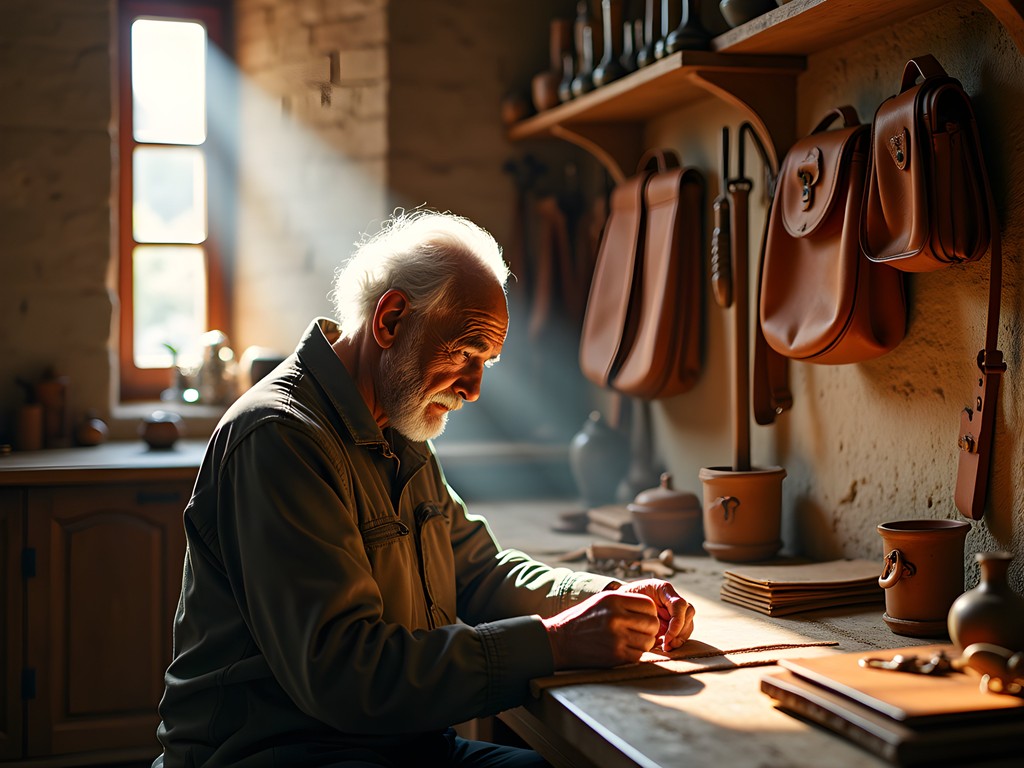
💡 Pro Tips
- Shop early morning (8-10am) or late afternoon (after 4pm) to avoid cruise ship and bus tour crowds
- Ask artisans about shipping options—many have reasonable rates for international delivery
- Look for the 'Artigianato Artistico Toscano' label which certifies authentic Tuscan craftsmanship
Navigating Prices and Authenticity in Tuscany
Let's address the elephant in the Tuscan room: prices in San Gimignano can induce mild cardiac events if you're unprepared. As a mid-range traveler who appreciates quality but isn't looking to remortgage my home for souvenirs, I quickly developed a strategy for distinguishing value from tourist markup.
First rule: if a shop displays 'Made in Italy' signs prominently in English, proceed with caution. The truly authentic workshops rarely need to advertise their Italian credentials—they're evident in the craftsmanship. Second rule: venture beyond Via San Giovanni (the main thoroughfare). Just two streets over, I found nearly identical ceramics for 30% less at La Terracotta di Toscana, where fourth-generation potter Marco creates pieces using clay from the surrounding hills.
For those seeking genuine value, I recommend bringing along a portable luggage scale to weigh potential purchases. Nothing dampens the joy of finding the perfect ceramic platter like discovering it will cost more in excess baggage fees than the item itself. This compact device saved me from an expensive surprise at check-in after I perhaps became too enthusiastic about Tuscan olive oils and wines.
Authenticity in San Gimignano often correlates with workshop visibility. The shops where you can actually see artisans working—cutting leather, painting ceramics, or carving alabaster—generally offer more authentic pieces. At Bottega dell'Alabastro, I watched as craftsmen transformed raw stone into delicate figurines, explaining that this tradition dates back to Etruscan times. The pieces weren't cheap, but understanding the skill involved made the investment feel worthwhile.
My most treasured purchase came from an unassuming workshop where I found Angela creating hand-marbled paper using techniques from the Renaissance. For €25, I acquired a journal bound in this paper that has become my travel diary for subsequent adventures—far more meaningful than mass-produced souvenirs costing twice as much.
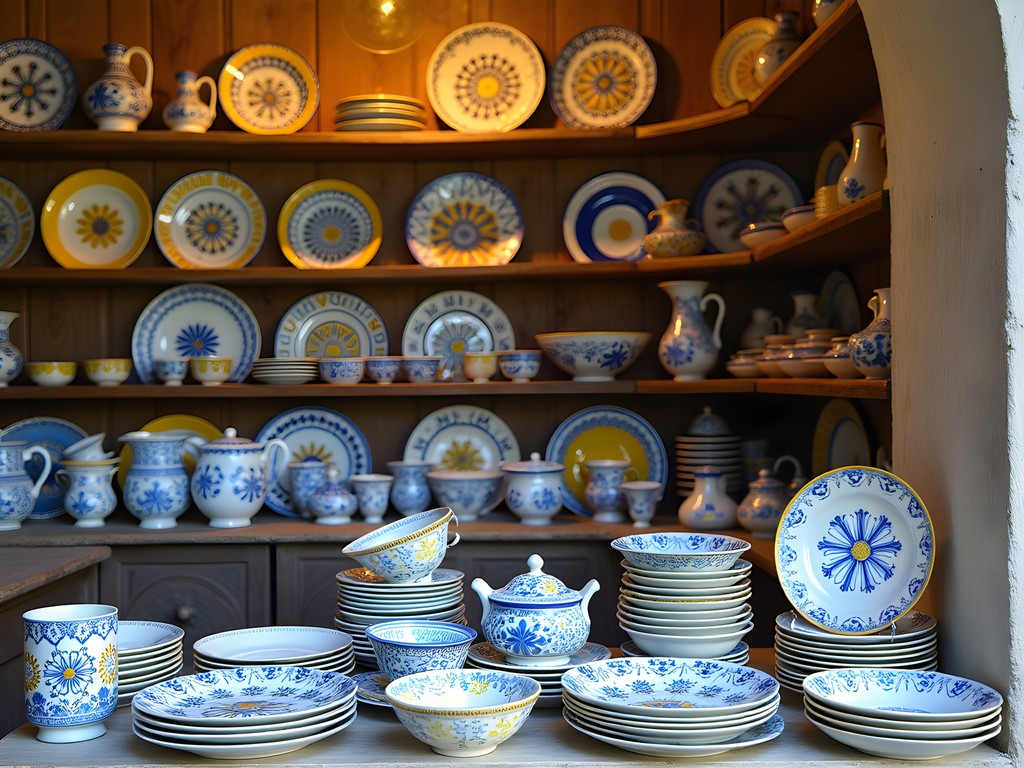
💡 Pro Tips
- Ask where materials are sourced—authentic crafts typically use local materials
- Visit during the shoulder season (May or September) when artisans have more time to chat about their work
- Learn a few Italian phrases related to crafts—artisans appreciate the effort and may offer better prices
Door County: America's Craft Peninsula
Six thousand miles and one continent away from San Gimignano lies Door County—a peninsula jutting into Lake Michigan that feels worlds apart from Tuscany yet shares a surprising devotion to artisanal crafts. Where San Gimignano's traditions stretch back millennia, Door County represents a more recent American interpretation of craft culture, one that blends traditional techniques with contemporary innovation.
My exploration began in Fish Creek at Hands On Art Studio, a concept that would be almost heretical in tradition-bound Tuscany. Here, visitors become artisans themselves, creating pottery, glass art, and jewelry under expert guidance. As an educator, I was immediately drawn to this participatory approach. I spent a delightful afternoon crafting a fused glass plate that now serves as my key dish back home—a functional souvenir with a story.
Door County's craft scene reflects its natural environment in ways that parallel how Tuscan crafts reflect their medieval heritage. At Plum Bottom Gallery near Egg Harbor, I discovered pottery glazed in blues and greens that perfectly capture Lake Michigan's shifting hues. The artist, Chad, explained how he collects local minerals to incorporate into his glazes—a connection to place as profound as anything I found in Italy.
Textile arts flourish here too. At Textile Trail Studio in Baileys Harbor, I found handwoven scarves created on traditional looms but featuring distinctly modern designs. The owner, Karyn, showed me how she uses wool from Wisconsin sheep, hand-dyeing it using plants grown in her garden. I couldn't resist purchasing a merino wool scarf in stunning indigo tones that pairs beautifully with my travel blazer—a versatile piece that transitions effortlessly from planes to meetings to casual dinners, making it my go-to travel companion.
What struck me most was how Door County's artisans have embraced sustainability as part of their craft identity. At Kingfisher Farm & Studio, furniture maker Peter creates stunning pieces from trees felled by storms or disease on the peninsula. 'Nothing goes to waste here,' he told me while showing a cherry wood bowl whose rich color came from a tree struck by lightning just a mile away.
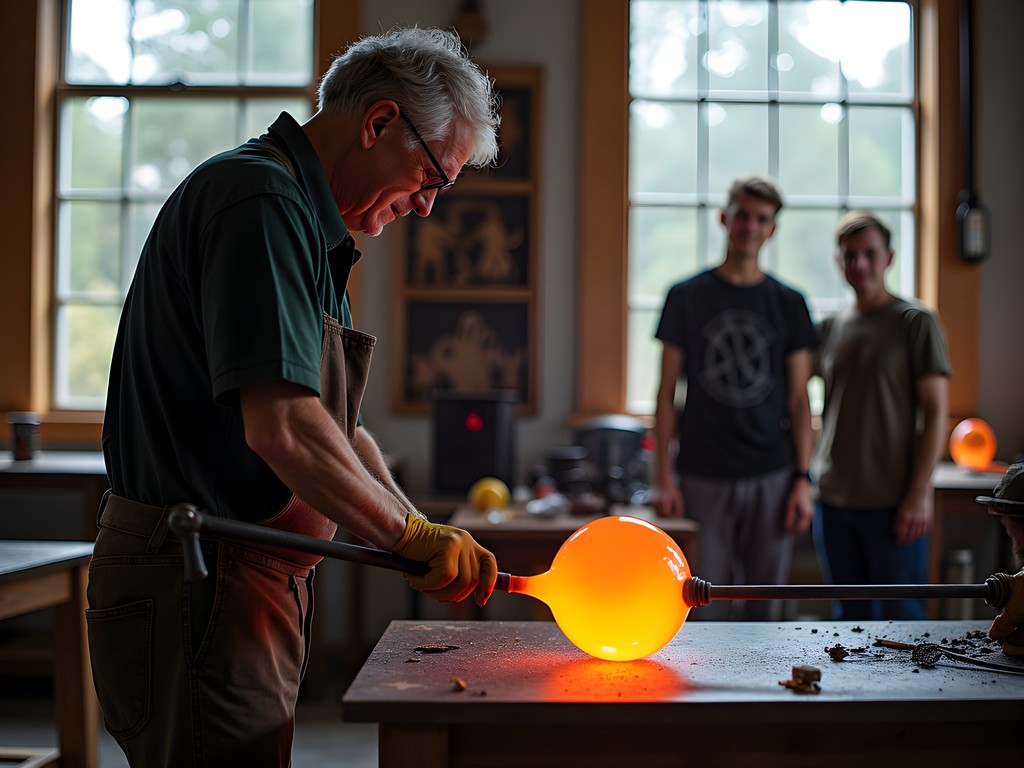
💡 Pro Tips
- Visit studios during weekdays when artists have more time for demonstrations and conversations
- Look for the 'Door County Made' label which identifies locally-crafted items
- Many studios offer shipping for larger items—take their card even if you're not ready to purchase immediately
The Culinary Crafts: Edible Souvenirs
No discussion of artisanal shopping would be complete without addressing the edible crafts that define both regions. In San Gimignano, food and drink aren't just sustenance—they're souvenirs with centuries of tradition behind them.
The town's specialty, Vernaccia di San Gimignano wine, holds DOCG status (the highest quality designation in Italy) and has been produced here since at least the 1200s. At Tenuta Le Calcinaie, winemaker Simone explained how the mineral-rich soil gives the wine its distinctive character while pouring generous tastings. I left with two carefully wrapped bottles and shipping information for future orders.
Saffron has been cultivated around San Gimignano since medieval times, when it was so valuable it served as currency. At Spezieria Toscana, I discovered small packages of locally-grown saffron along with saffron-infused honey that makes an extraordinary addition to cheese plates back home.
Crossing to Door County, the culinary crafts take on a distinctly American character while maintaining a similar dedication to place. The peninsula's famous cherries appear in everything from jams to wines to the iconic cherry pie. At Seaquist Orchards Farm Market, I watched as cherries were transformed into preserves using recipes passed down through generations, the process not entirely unlike watching olive oil being pressed in Tuscany.
Door County's craft beverage scene rivals Italy's in passion if not in age. At Island Orchard Cider in Ellison Bay, I discovered apple ciders made in the French style that could hold their own against any European competitor. The cidery uses heritage apple varieties grown on Washington Island, creating a terroir as distinctive as any wine region.
For travelers concerned about fitting edible souvenirs into their luggage, I've found a packing cube set invaluable for organizing and protecting bottles and jars. The water-resistant material provides peace of mind against potential leaks, and the compression feature helps maximize limited suitcase space. After an unfortunate incident involving a broken bottle of olive oil in Tuscany some years ago, these have become essential to my shopping adventures.
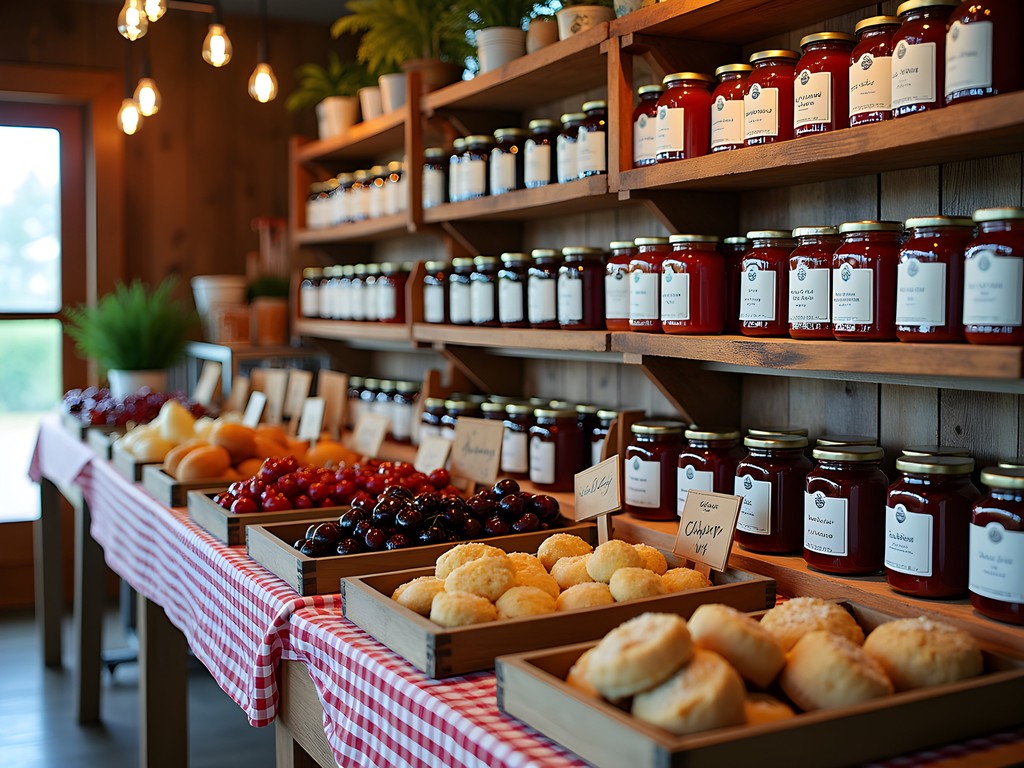
💡 Pro Tips
- Check customs regulations before purchasing food items—some products may be restricted when returning home
- Many producers offer vacuum-sealed packaging specifically designed for travel
- Consider shipping heavier items directly home rather than carrying them
The Art of Craft Conversation: Cultural Exchange Through Shopping
Perhaps the most valuable souvenir from both destinations wasn't something I could wrap in tissue paper, but rather the conversations that accompanied each purchase. As an educator, I've always believed that meaningful learning happens through cultural exchange, and shopping for crafts provides a natural context for these interactions.
In San Gimignano, I quickly learned that rushing through a purchase is considered almost offensive. When I expressed interest in a hand-tooled leather journal at Bottega del Cuoio, the artisan, Francesco, insisted I sit down for an espresso while he explained the medieval binding technique he uses. What could have been a five-minute transaction became a 40-minute masterclass in Renaissance bookbinding. The journal cost more than I'd initially planned to spend, but the education that came with it was priceless.
I've found that asking specific questions about technique opens doors to deeper connections. Rather than the generic 'Did you make this?' try 'How long does it take to complete this type of piece?' or 'Where did you learn this technique?' In San Gimignano's ceramic shops, these questions led to stories about apprenticeships beginning in childhood and designs passed through generations.
Door County artisans share this appreciation for genuine interest but with an American openness that feels distinctly different. At Cappaert Contemporary Gallery, clay artist Ginnie immediately invited me to touch her textured ceramic pieces—something that would cause mild panic in most Italian galleries. 'Art should engage all the senses,' she explained, demonstrating how she creates texture using natural objects from Door County beaches.
Many Door County craftspeople are transplants who chose the peninsula specifically for its supportive arts community. Their stories often include previous careers abandoned in favor of creative fulfillment—a narrative I found particularly resonant as someone who balances educational leadership with creative pursuits.
To document these meaningful encounters, I use a travel journal dedicated specifically to craft shopping notes. I record artisan names, studio locations, and the stories behind pieces I purchase or admire. This practice has transformed shopping from a transactional experience to a documentary of cultural connections, creating a reference for future trips and a way to accurately share information about artisans with friends back home.
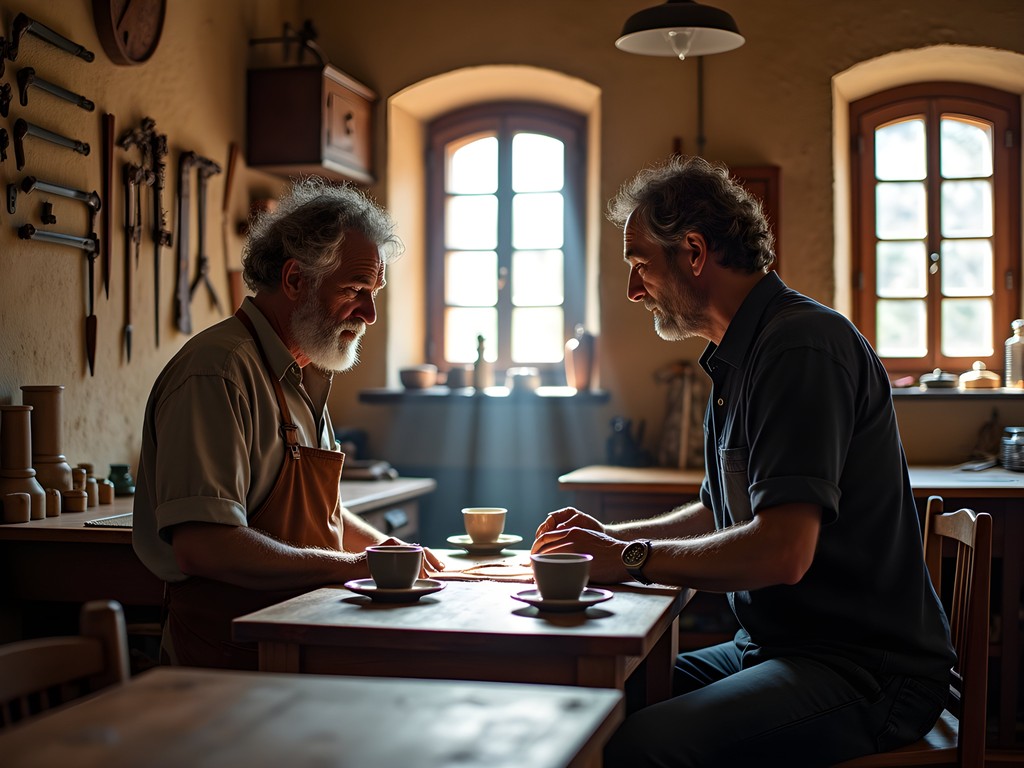
💡 Pro Tips
- Learn a few phrases in Italian before visiting San Gimignano—even basic greetings open doors to more authentic interactions
- Ask permission before photographing artisans or their workshops—some techniques are proprietary
- Collect business cards from favorite artisans to maintain connections and enable future purchases
Final Thoughts
After two weeks divided between these craft havens—one ancient, one relatively new; one European, one American—I've come to appreciate how artisanal traditions both preserve cultural heritage and evolve to reflect changing times. San Gimignano offers a window into centuries of unbroken craft lineage, while Door County demonstrates how traditional techniques can be reimagined through contemporary American perspectives. Both destinations remind us that in an age of mass production and digital detachment, there remains profound value in objects made slowly, with intention and human connection. Whether you're watching a third-generation ceramicist in Tuscany or a former accountant turned glass artist in Wisconsin, these craft encounters offer something increasingly rare: a direct connection to the maker and their story. So when planning your next holiday, consider making room in your itinerary—and your luggage—for these artisanal treasures. They may weigh down your suitcase, but they'll enrich your travels immeasurably.
✨ Key Takeaways
- Both destinations offer authentic craft experiences but with distinctly different cultural contexts
- The most valuable part of craft shopping is the connection with artisans and their stories
- Sustainable, handmade souvenirs create lasting connections to the places we visit
📋 Practical Information
Best Time to Visit
May-June or September for San Gimignano; July-September for Door County
Budget Estimate
$100-300 for quality artisanal purchases in each destination
Recommended Duration
3-4 days in each location to fully explore craft offerings
Difficulty Level
Beginner
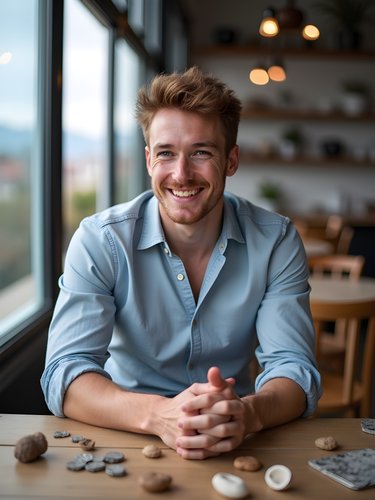


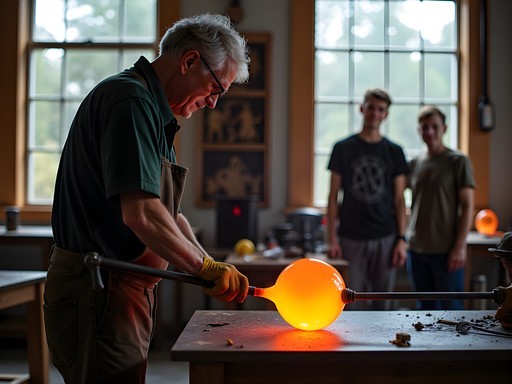
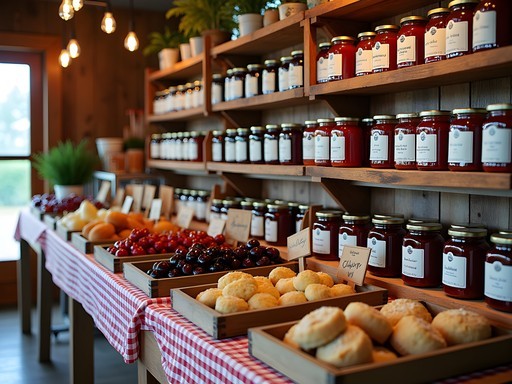
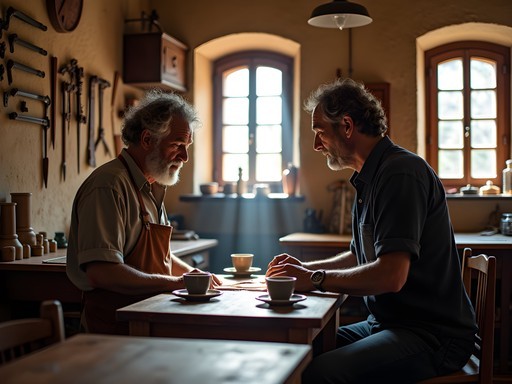










Comments
globeone
Great comparison! Never thought of these two places together but it makes sense!
winternomad
Just got back from Door County and totally agree about the glass studios! Watched a glassblowing demo that was mesmerizing. Ended up buying three pieces even though my budget said no. Worth it though!
Adam Nichols
Having extensively documented artisanal crafts across Europe, I found your comparison particularly astute. The economic dynamics of craft markets in tourist-heavy regions like San Gimignano create interesting preservation incentives. While some decry commercialization, tourism has actually preserved traditional crafts that might otherwise have disappeared. Door County represents a different model - newer traditions built deliberately around tourism rather than adapted from centuries-old practices. Both valid, but fundamentally different in their relationship to authenticity. Your observations about pricing transparency in Door County versus the negotiation culture in Italy were particularly insightful.
sunsetperson
Is it worth bringing an extra suitcase just for shopping in these places? Or can most stuff be shipped?
Jackson Wallace
Most shops in both places offer shipping, but it can get pricey. I usually pack a foldable duffle in my suitcase for extra purchases. The ceramics in San Gimignano need careful packing though!
skyway4779
Door County's cherry products are AMAZING! We brought home jars of cherry salsa last summer and I'm still dreaming about it. Wish I'd bought more!
winternomad
You can actually order online from some of the Door County shops! We get cherry jam shipped to us twice a year since our trip there.
skyway4779
No way! Which shop do you use? Need to restock ASAP!
luckyblogger
OMG I bought the CUTEST ceramic bowl from that little shop near the south gate in San Gimignano! Still my favorite souvenir ever! Your post brought back so many memories!!! 😍
Michael Cook
Your comparison between these two craft destinations is fascinating from a cultural economics perspective. I visited San Gimignano last year and noticed how the craftspeople there have adapted traditional techniques for modern tourists while maintaining authenticity. The pricing structure you mentioned is spot-on - the further you venture from Piazza della Cisterna, the more reasonable prices become. Door County seems to have developed a more accessible craft culture without the centuries of tradition. Did you notice any cross-pollination of techniques between American artisans and European traditions?
greenlegend3880
How do you tell if the ceramics in San Gimignano are authentic local crafts vs mass-produced tourist stuff? Going in September and don't want to get ripped off!
Jackson Wallace
Great question! Look for workshops where you can actually see artisans working. The shops on Via San Giovanni tend to be more authentic. Always check for a signature or maker's mark on ceramics, and don't be afraid to ask about their process!
greenlegend3880
Thanks so much! Will definitely check out those workshops.
nomadguide
Just got back from Door County! The pottery studios in Fish Creek are amazing. If you go in September, way fewer crowds but all shops still open. Best of both worlds!
islandmaster
Your comparison really resonated with me! After 20+ years of international travel, I've found that the stories behind artisanal pieces matter more than the items themselves. In San Gimignano, I spent an afternoon with an elderly leatherworker who showed me how his family had been making wallets the same way for generations. The wallet wasn't cheap (€85), but watching his weathered hands work that leather was priceless. Similarly in Door County, I met a glassblower who transitioned from corporate life in Chicago. Two very different backgrounds but the same passion for craft. One observation I'd add - European artisans often emphasize tradition while American ones frequently highlight innovation or personal reinvention. Both approaches create beautiful results!
Jackson Wallace
That's such an insightful observation about tradition vs. innovation! You've captured something I felt but couldn't quite articulate. Thank you for sharing your experiences!
Venture X
Premium card with 2X miles, $300 travel credit, Priority Pass